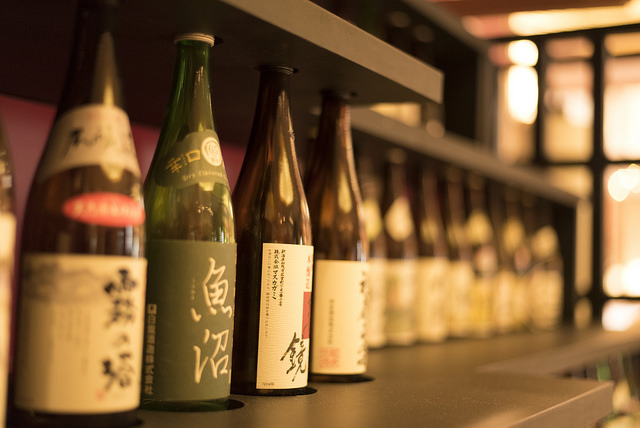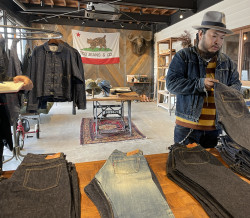
February 24, 2018
Sales of Japanese Sake Soaring Overseas
Breweries join forces to fight the decline of the rice wine
By Masaru Urano
Anyone who’s lived in Japan knows that Japanese sake, the alcoholic drink made from fermented rice, is virtually ubiquitous here. With bottles and cans (and even tiny jars) of the booze stocked in almost every konbini, it epitomizes the deep relationship Japanese society and culture has with the drink that has been around for 2000 years.
Despite its prevalence, however, domestic consumption of sake has been dwindling for the past few decades. Not only has the consumption of alcohol been on the decline, more Japanese drinkers are choosing wine and spirits over sake in recent years, diminishing sake’s share in the alcohol market from roughly 24% forty years ago to just above 5% today. As a result, the number of sakaguras (sake breweries) have decreased by more than half since the 1980s. Without some sort of breakthrough, the national drink of Japan may fade into oblivion in the shadows of yoshu (western drinks).
To combat this life-or-death issue, the sakaguras are fighting back with campaigns to tap into new markets and reenergize old ones.
International Popularity
According to the Japan Sake & Shochu Makers Association, the popularity of sake is rapidly increasing all around the world. Japanese sake exports rose to an all time high of ¥18.6 million in 2017, with the value of exports doubling in the last five years alone. “In volume, it is about 13 million bottles in issho-bin (1.8 litre sake bottle),” the association said in a statement. “Converted into length (the bottle is about 40 cm tall), the total is equivalent to the distance between Tokyo and Singapore.”
The biggest buyer is the US, with roughly a third in export value going to the States. American sake imports have steadily grown in volume and value, both rising by more than half in the last ten years. China, South Korea, Taiwan and Hong Kong are the next biggest importers, with Chinese consumption growing by 83% in just one year.
The boom in global sake consumption is no coincidence. Sake brewers have been aggressively deploying marketing operations overseas, particularly in the US and east Asia. By exporting sake to Japanese restaurants worldwide, the breweries have piggybacked on the popularity of sushi and other Japanese food. Branding tactics that emphasize traditional Japanese design and kanji characters on bottle labels have also proven to capture the curiosity of overseas consumers. The Japanese government is also in full support of the initiative, serving sake to world leaders in the G7 Ise-Shima Summit in 2016
Recognition by international connoisseurs has also contributed to the campaign. The International Wine Challenge, a global wine-judging competition, also judges seven types of sake. Many chefs and sommeliers have begun to recognize sake as an alternative to wine in high-end cuisines, especially for dishes which cannot complement the acidity of wines.
Sakaguras have also popped up overseas, with breweries in Australia (the Go-Shu Australian Sake Brewery in Sydney), the UK (Kanpai in South London) and the United States. However, this is not expected to drive down export demand, partly thanks to the U.S. Department of Agriculture’s decision to classify “Japanese Sake” under the Geographic Indicators laws. This means that, just as the wine Champagne can only be called that if it came from the Champagne region, sake that brands itself as Japanese sake must be made in Japan.
Craft Sake
Sakaguras are not just looking at the overseas market for a way out of their woes. Just as with beer and whiskey, craft sake is gaining popularity in the domestic liquor market, with the help of a Japanese superstar.
Japanese football icon Hidetoshi Nakata currently heads the Japan Craft Sake Company, which hosts the annual “Craft Sake Week”. The multi-day event, which drew in more than half a million visitors last year, features pop-up booths serving craft sake from dozens of local sakaguras. This year, one of the venues will be located in Sendai. The Craft Sake Week Tohoku will feature 50 sakaguras, and six restaurants to serve dishes that will accompany the sake.
The event aims to deepen the relationship between the drinker and brewer. “You can hear about how to enjoy and select Japanese sake from the brewers that set up shop and the wine sommeliers that will be onsite,” Craft Sake Week explained in a statement. “By learning about sake-making customs of each sakagura and regional differences, you can experience the Japanese “SAKE” culture and rediscover the charm of Japanese sake.”
Craft Sake Week Tohoku 2018
March 21–25, 12pm–9pm.
Kotodai Park, Sendai
http://craftsakeweek.com/tohoku/en.html







